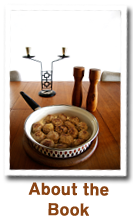About Glucose
Type 2 diabetes and pre-diabetes occur as a result of a defect in the way our bodies metabolise carbohydrate foods, so let’s start with what these foods actually are.
Carbohydrates are sugars and starches.
Carbohydrate-containing foods include bread, potato, pasta, rice, cereal, sugar, honey, fruit and milk. These foods all have something in common. When they are eaten and digested, the end result is a mixture of sugars, predominantly glucose. Glucose is used to provide fuel for the body; therefore, carbohydrates are often thought of as energy foods.
To explain this further, consider that the starch in pasta, rice, bread, cereals and so forth is made up of many sugar units joined together. The sugar we add to our tea and coffee and the naturally occurring sugars in fruit, milk and honey consist of simpler single or double sugar units. When all these foods are digested, the sugar units are broken apart and most end up in our blood as glucose.
We then refer to this glucose as blood sugar or blood glucose.To make this easier to visualise, take a slice of bread as an example. The starch in bread is made up of many sugar units joined together.

When you eat a slice of bread, the sugar units are broken apart and end up as glucose.

One 35gm (1 oz) slice of white, multigrain, rye, wholemeal, sourdough or gluten-free bread ends up as 3 teaspoons of sugar.

Bread doesn’t taste sweet, but eating a slice provides us with the same amount of sugar as we would get by scooping 3 teaspoons from the sugar bowl. In the same way, after digestion, one medium potato ends up as 4 teaspoons of sugar, 1 cup of cooked rice or pasta as 9 teaspoons, 1 large glass of milk as 3 teaspoons and 1 medium apple as 3 teaspoons of sugar.


This information is often a surprise to people. You may have been advised to limit sugar-containing foods but haven’t been told that bread, fruit, rice, pasta and cereal also end up as glucose in the blood. These foods therefore raise the blood glucose level in the same way that consuming sugary foods or drinks will.
If you have a blood glucose monitor you may have seen this. Test before and then one hour after eating carbohydrate, and generally you’ll see that the level of glucose is higher.
What can I do to control diabetes and pre-diabetes?
In order to normalise blood glucose, we need to consider the following three factors:
* Diet
* Exercise (if possible)
* Medication (sometimes)
In my book you will learn about what happens to carbs in your body, why your blood glucose levels are high at times and how to correct this.
I believe that type 2 diabetes should be seen as a problem with carbohydrate metabolism that can be corrected. I believe it's wrong to describe it as an incurable, progressive disease, although this is often the case when incorrect diet advice is followed. When the cause of diabetes is understood and properly managed, weight loss and improvements in BGLs and well-being can be achieved.





